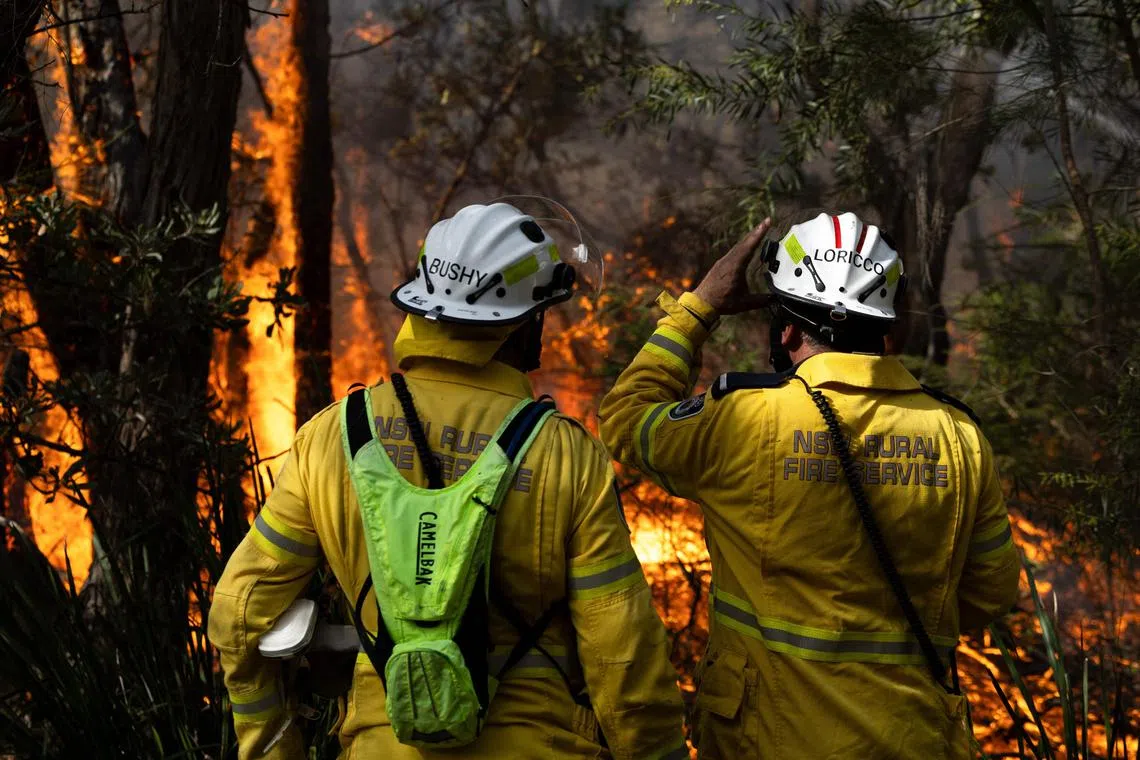Australia warns of multibillion-dollar climate disaster costs
Sign up now: Get insights on Asia's fast-moving developments

Volunteer firefighters monitoring a hazard reduction burn in northern Sydney on July 15. The Australian authorities are warning of a growing risk of severe bush fires.
PHOTO: AFP
Follow topic:
SYDNEY – Australian Treasurer Jim Chalmers highlighted the soaring cost of disaster management in his nation ahead of a potentially disastrous wildfire season in the coming summer, fuelled by El Nino.
Government funding for disaster recovery has increased by 433 per cent over the past three years, Mr Chalmers said in a speech that was delivered on Tuesday in the northern city of Rockhampton. The costs stood at A$2.5 billion (S$2.2 billion) for the financial year that ended on June 30.
“The pressure of a changing climate and more frequent natural disasters is constant, cascading, and cumulative,” Mr Chalmers said.
Australia has experienced several years of devastating natural disasters, from the Black Summer bush fires
The authorities are warning of a growing risk of severe bush fires over the coming months due to an El Nino weather system
Australia is at the forefront of climate change impact, yet has faced criticism for lagging behind in addressing the risk, particularly under the previous centre-right government that ruled from 2013 to May 2022. The nation is one of the biggest per capita carbon emitters and among the largest exporters of coal.
Emergency Management Minister Murray Watt said on Sunday that Australia is better prepared for the upcoming bush fire season than it had been in 2019, adding that government funding for aerial firefighting has doubled since then.
But Mr Chalmers said the economic damage from climate change is only just beginning to be understood, with the Black Summer bush fires and floods in October 2022 each costing the Australian economy about A$1.5 billion.
“If further action isn’t taken, Australian crop yields could be 4 per cent lower by 2063, costing us about A$1.8 billion in GDP in today’s dollars,” he said. BLOOMBERG

